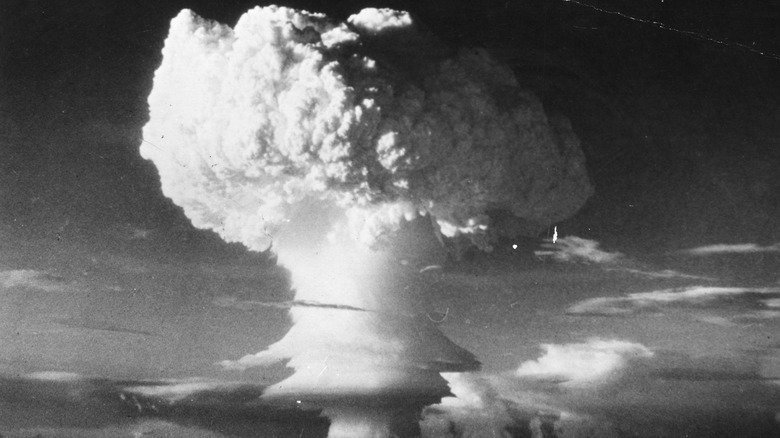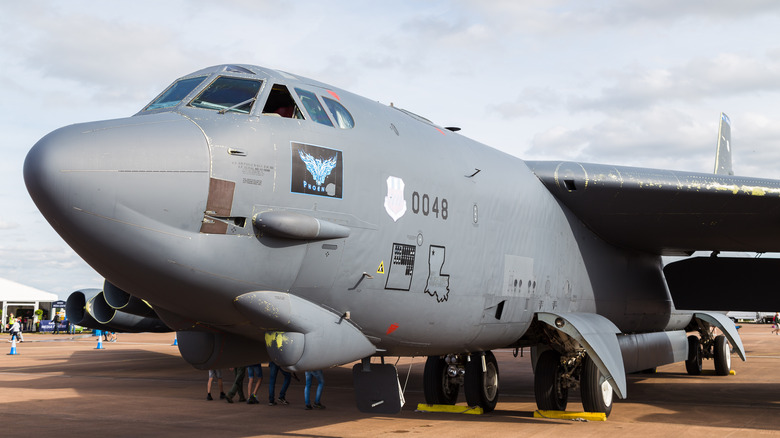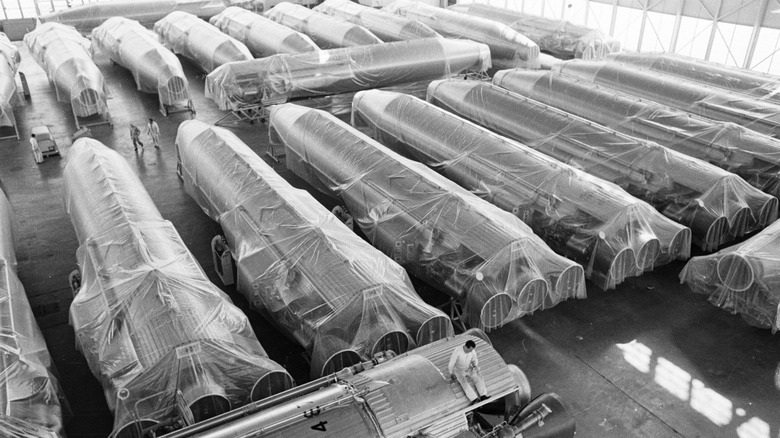America Once Lost A Nuclear Bomb. Here's What Happened
When it comes to nuclear weapons, it's safe to assume that the utmost care and respect would be afforded these powerful devices. What with their capacity to destroy everything within hundreds of miles of being detonated and all. One might even expect the most powerful country in the world, the United States, would have safety measures and protocols in place to keep track of all their nuclear weapons at any given time. In fact, according to Arms Control Center, the United States has about 3,800 nuclear warheads ready to launch, as well as 1,700 "retired" warheads (bombs that still need to be decommissioned). With so many devices available to destroy the world several times over, keeping tabs on all of them is a top priority. Until one (or four) gets lost.
On January 21, 1968, a B-52H Stratofortress carrying four hydrogen bombs (a type of nuclear warhead) crashed in Greenland. Part of a long-term military campaign called "Chrome Dome" (via Air Force Mag), the U.S. used this operation to have a constant nuclear presence ready at the border of the then-Soviet Union. Beginning in 1960, the operation had a steady stream of B-52H Stratofortresses, armed with nuclear weapons, flying over Scandinavian countries like Denmark and Greenland on its flight path toward the border of the Soviet Union.
Crash into the ice
While on the routine flight path on January 21, 1968, a B-52H Stratofortress (known as HOBO 28) with a payload of four nuclear warheads came into a spot of trouble. According to Air Force Times, a nameless crew member carelessly placed seat cushions near a heating vent, causing a fire. The smoke filling the cabin got so bad that the seven-man crew had to eject from the flaming plane. The plane continued on, without a crew, another 20 miles, before crashing into Wolstenholme Fjord (via History Net).
Because the bomber crashed into ice, dog sleds were dispatched to the site to recover survivors and test the safety of the ice (via Air Force Mag). After about a week into the recovery of the bomber, officials determined that the nuclear warheads had been compromised. While the world was lucky enough to avoid a devastating nuclear explosion, the crash caused the warheads to disintegrate, leaving behind a radioactive disaster. Denmark, the country that holds jurisdiction over Greenland, demanded the U.S. clean up the accident.
A missing warhead?
The massive clean-up effort included 71 tanks filled with 25,000 gallons of radioactive snow and ice. According to History Net, the crews in charge of cleanup were able to remove the radioactive uranium from three of the bombs, but not the fourth. In 2000, a Danish newspaper revealed that the fourth "missing" bomb was, in fact, still laying on the sea floor not far from the United States' Thule Airbase, located in Denmark. Shortly after the revelation, Lawrence Butler, Deputy Chief of Mission at the US Embassy in Denmark, responded to the accusation: "We are not able to comment at this stage" (via ABC News).
While operation "Chrome Dome" effectively ended on January 22, 1968, according to History Net, the United States still has warplanes on high alert at Thule Airbase in Greenland, just on the ground. As well as continuing to send B-52 bombers on long range missions, minus the devastating payloads.


